Best
Budget Beginner Tenor Saxophone
-
Overall: With a redesigned brace to keep the weight down
-
Best Feature: Made of yellow brass to produce a versatile tone
-
TedScore™: 7/10
Best
Overall Beginner Tenor Saxophone
-
Overall: Has a yellow brass body for producing a versatile tone
-
Best Feature: With rib-mounted keys for added strength to the keywork and improved resonance
-
TedScore™: 8.5/10
Best
Student Tenor Saxophone
-
Overall: Beautiful look and rich tone with a gold lacquer finish
-
Best Feature: Easier response from lower notes with the improved, stronger B-C# mechanism
-
TedScore™: 8/10

If you’re a tenor saxophonist, then you know firsthand how important it is to have a good fingering chart.
The tenor saxophone is used in many music genres, like jazz, blues, and rock.
A Tenor Saxophone Fingering Chart chart can be your best friend when learning to play the saxophone. It’s like a map showing which keys to press to produce different notes.
So, whether you’re a beginner or an experienced saxophonist, a reliable fingering chart is a key must-have tool to improve your playing skills.
Keep reading to learn more!
The Tenor Saxophone
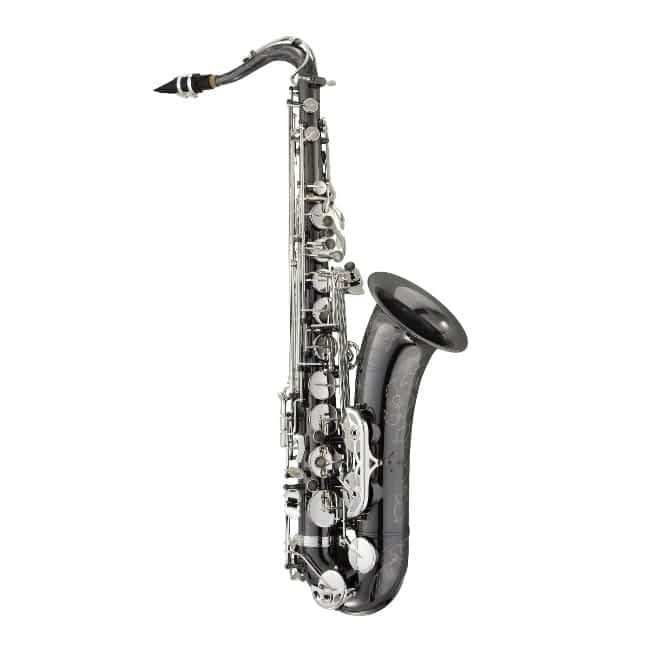
The tenor saxophone is a medium-sized saxophone pitched in the key of B-flat.
It’s a popular instrument in jazz and rock music with a warm, rich tone that’s instantly recognisable.
The tenor saxophone is larger than the alto saxophone but smaller than the baritone saxophone.
Tenor Saxophone Fingering Chart
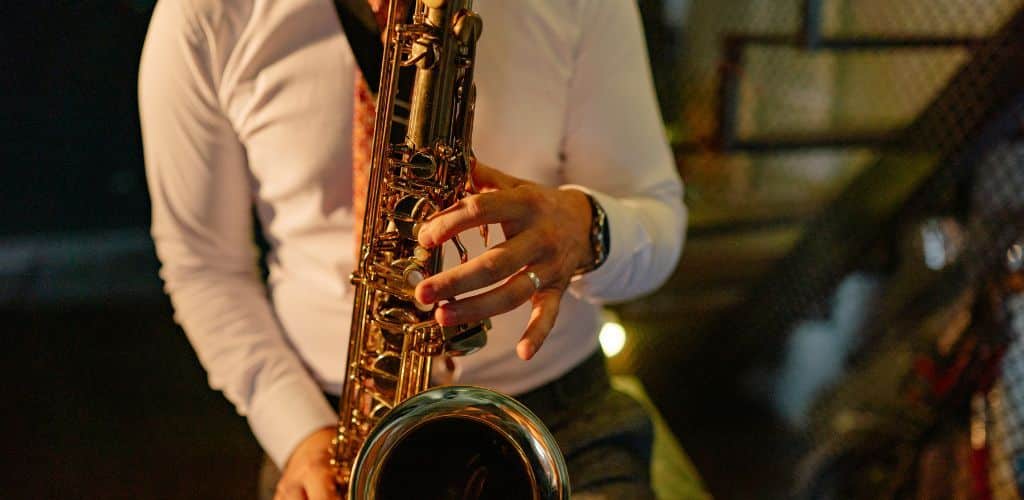
A tenor saxophone fingering chart is a tool that helps you learn and remember the fingerings for each note on your instrument.
A good fingering chart lets you quickly and easily find the fingerings you need to play any note on your saxophone.
Many different types of tenor saxophone fingering charts are available, from basic charts that show the fingerings for each note to more advanced charts that include alternate fingerings and other helpful information.
Some charts are designed for beginners, while others are more suited to advanced players.
One important thing to remember when using a tenor saxophone fingering chart is that fingerings can vary depending on the make and model of your instrument.
Be sure to check your instrument’s manual or consult a teacher or experienced player to ensure you’re using the correct fingerings for your saxophone.
Alternate and Altissimo Fingering
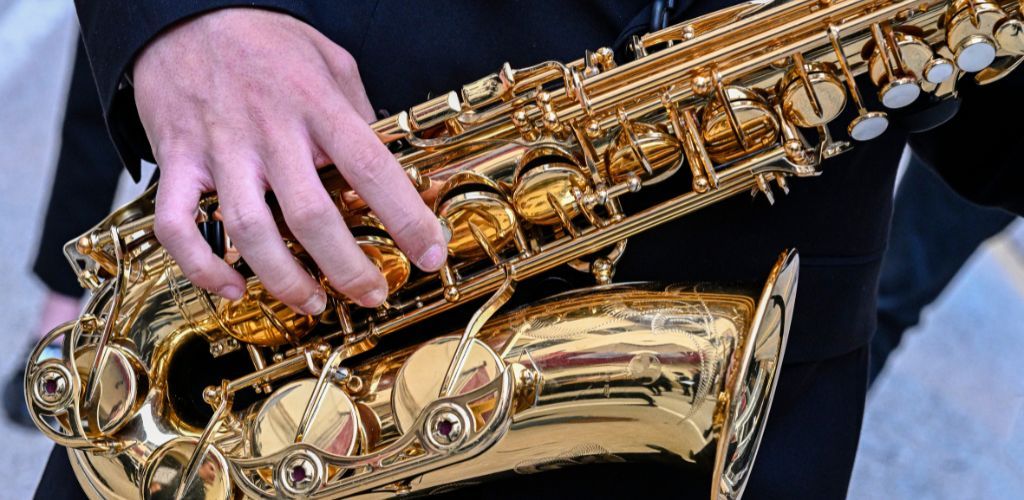
When playing the tenor saxophone, you may find that some notes are difficult to reach or produce the desired sound. This is where alternate and altissimo fingerings come in handy.
Alternate Fingerings
Alternate fingerings refer to different fingerings that can play the same note.
These fingerings can make it easier to play certain passages, achieve a different tone or sound, and even a concert pitch!
Altissimo Fingerings
The altissimo range refers to the higher range of notes on the tenor saxophone.
Playing in the altissimo range can be challenging, but it can be done with practice and the same right hand and fingerings.
The chart above shows some altissimo fingerings for the tenor saxophone.
Comparison with Other Saxophones
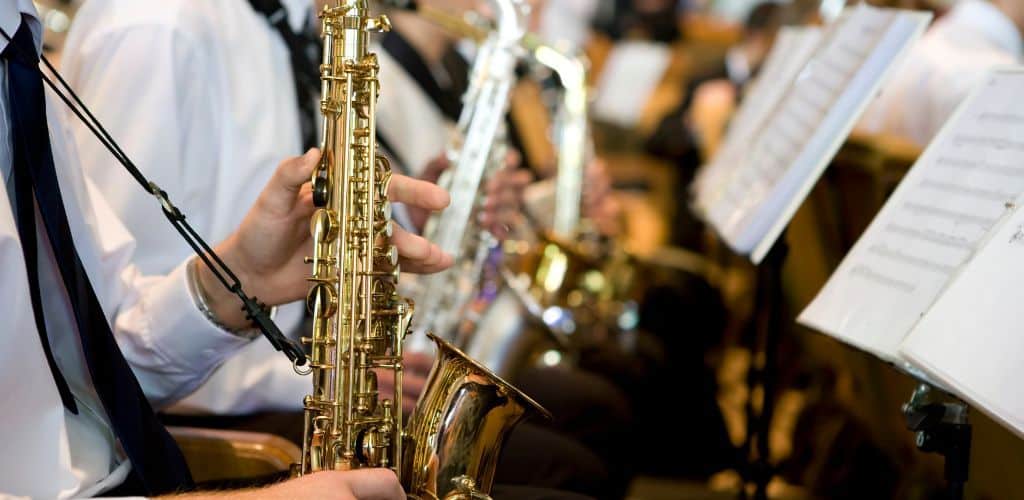
When it comes to saxophones, each type has unique qualities that make it stand out. The tenor saxophone is no exception.
Compared to other saxophones, it has a distinct sound and range that sets it apart.
The tenor saxophone is larger than the alto and soprano saxophones but smaller than the baritone saxophone. It has a richer tone than the alto and soprano saxophones but not as deep as the baritone saxophone.
The tenor saxophone ranges from Bb3 to F6, the same as the alto saxophone. However, the tenor saxophone has a lower pitch than the alto saxophone.
It has a brighter and more focused sound than the baritone saxophone. The baritone saxophone has a more mellow and rich sound, ranging from low A.
The tenor saxophone has a more versatile sound, making it suitable for various music genres, from jazz to classical.
Regarding fingering, the tenor saxophone has the same fingerings as the alto and soprano saxophones. However, the fingerings on the baritone saxophone are different due to its larger size and lower pitch.
Recommended Beginner Tenor Saxophones
Trevor James 'The Horn' Tenor Saxophone, Gold Lacquer

DESIGNED FOR: beginners and students
COMES WITH: With rib-mounted keys for added strength to the keywork and improved resonance
OTHER: A robust and reliable tenor saxophone
Trevor James 'The Horn' Tenor Saxophone, Gold Lacquer
- Checked by UK technicians to ensure perfection
- Includes a sturdy case, mouthpiece, and ligature
- The saxophone's finish may not be as good as on more expensive tenor saxophones
When you click ‘Check Price’, you’ll see there are loads of great places to buy this item. Our personal favorite is Sweetwater for the US, and Thomann and Gear4Music for the UK & Europe.
They are the largest music retailers, with excellent customer service, competitive prices, really fast shipping, and the longest guarantees.
The professional musician who wrote this article combined many things,
from the product build, manufacturer’s reputation through to feedback
from other users, to create our famous TedScore™.
Elkhart 100TS Student Tenor Saxophone

PERFECT FOR: beginners and students
COMES WITH: With a redesigned brace to keep the weight down
OTHER: Made of yellow brass to produce a versatile tone
Elkhart 100TS Student Tenor Saxophone
- All the keys have been rib mounted
- Comes in a number of bright and exciting colours
- Includes lightweight case with backpack straps and mouthpiece
- Lower-priced saxophones can often need repairing more often than expensive models
When you click ‘Check Price’, you’ll see there are loads of great places to buy this item. Our personal favorite is Sweetwater for the US, and Thomann and Gear4Music for the UK & Europe.
They are the largest music retailers, with excellent customer service, competitive prices, really fast shipping, and the longest guarantees.
The professional musician who wrote this article combined many things,
from the product build, manufacturer’s reputation through to feedback
from other users, to create our famous TedScore™.
Yamaha YTS280 Student Tenor Saxophone

PERFECT FOR: student players
FEATURES: Beautiful look and rich tone with a gold lacquer finish
OTHER INFO: Easier response from lower notes with the improved, stronger B-C# mechanism
Yamaha YTS280 Student Tenor Saxophone
- With an enhanced B-C# connector, lightweight feel, and adjustable thumb hook
- Yamaha quality creates one of the best tenor saxophones for students
- Yamaha also produces the YTS-62III, considered to be the best professional tenor saxophone
- All set with the included case and a high-quality 4C mouthpiece
- Quite expensive beginner tenor sax (but worth it!)
When you click ‘Check Price’, you’ll see there are loads of great places to buy this item. Our personal favorite is Sweetwater for the US, and Thomann and Gear4Music for the UK & Europe.
They are the largest music retailers, with excellent customer service, competitive prices, really fast shipping, and the longest guarantees.
The professional musician who wrote this article combined many things,
from the product build, manufacturer’s reputation through to feedback
from other users, to create our famous TedScore™.
Tenor Saxophone Fingering Chart
The Summary
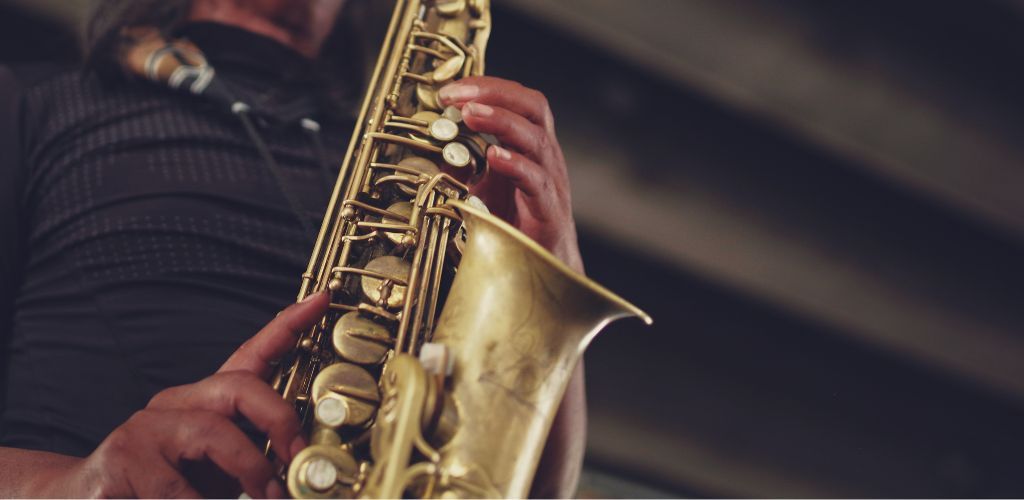
Hopefully, you’ve found these Tenor Sax fingerings useful. Once you get them into your muscle memory, you’ll be playing naturally and without having to pause and think.
So the key here (pardon the really bad pun!) – is practice. As much as possible!
And if you’re in the market to buy a new saxophone, take a look at my handy new article,‘TOP 9 BEST TENOR SAXOPHONES’.
Good luck!
FAQ's
The saxophone keys are used to control the pitch and sound of the instrument. They allow the player to create different notes and tones by opening and closing different combinations of keys.
Most saxophones have between 20 and 23 keys, although some models may have more or fewer. The number of keys can vary depending on the type of saxophone and the specific model.
Lorem ipsum dolor sit amet, consectetur adipiscing elit. Ut elit tellus, luctus nec ullamcorper mattis, pulvinar dapibus leo.


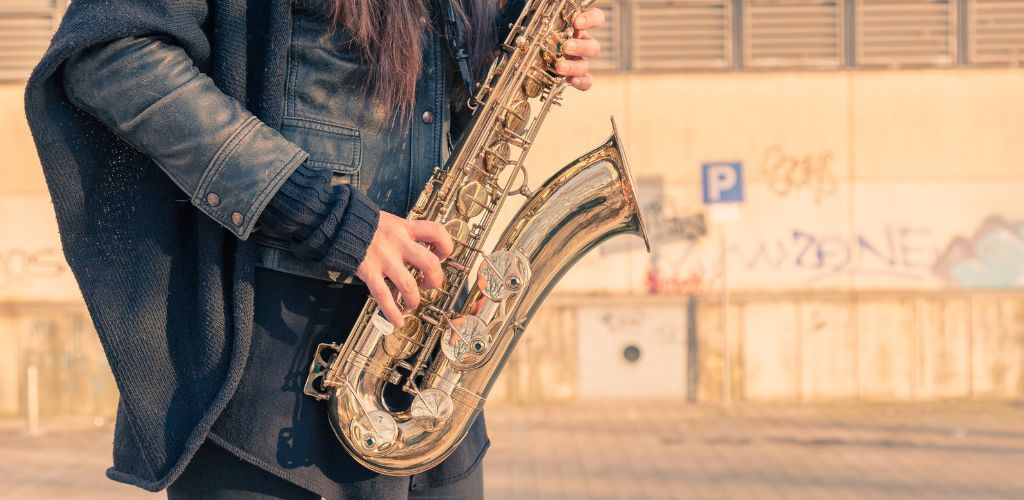









yo can u use these tips for making beats too?
This comparison between different saxophones is quite informative. I remember my early days of confusion between choosing a tenor or alto saxophone. Articles like this would have been incredibly beneficial back then. It’s crucial for beginners to understand the subtle nuances that make each saxophone unique.
Loving the detailed breakdown of the altissimo fingerings, not many guides go into that. It’s gonna take my play to the next level. Props, Elaine Booth!
Right? Mastering those notes is a game changer. Takes practice, though.
i just got a tenor sax and this chart’s a lifesaver, but do u have any tips on transitioning between notes smoother? thx!